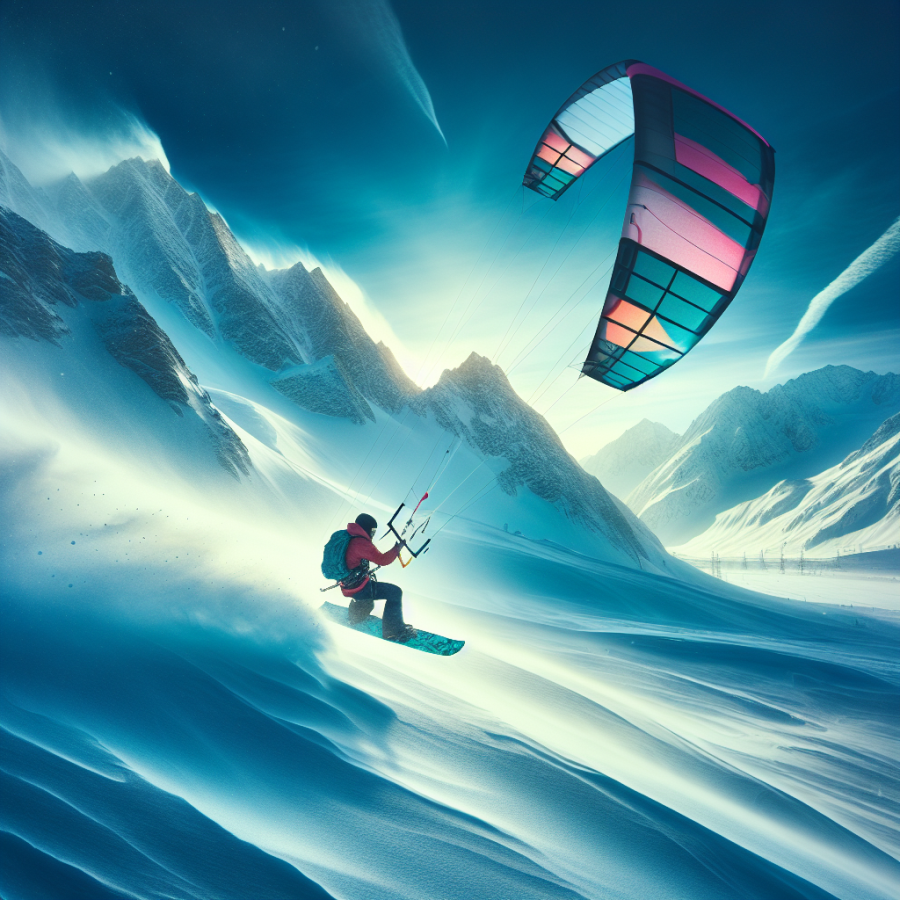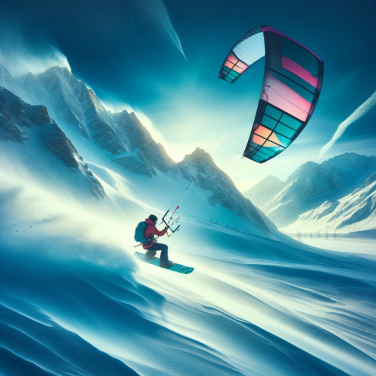Exploring the World's Top Snowkiting Destinations: Where to Find the Best Winds and Terrain
Nestled within the realm of winter sports, snowkiting has emerged as a thrilling fusion of snowboarding, skiing, and kitesurfing, offering an unparalleled experience for adventure-seeking enthusiasts. As wind harnesses the driving force behind this dynamic activity, pinpointing the top destinations worldwide where the perfect combination of consistent gusts and stunning terrain coalesce is essential for the ultimate snowkiting journey.
Starting the journey in the Northern Hemisphere, Norway stands out as the birthplace of snowkiting, with Hardangervidda being a prime location. This expansive mountain plateau provides vast, open areas with steady winds, and coupled with its scenic beauty, it's no wonder why it's a favored spot for both beginners and experienced kiters looking for a challenging terrain.
Crossing the Atlantic, the United States presents a plethora of snowkiting spots, with Utah's Skyline Drive gaining notoriety for its high elevation and reliable winds. The area boasts a unique combination of accessible mountainous backcountry and open meadows, satisfying thrill-seekers who crave elevation drops and those looking for a more mellow glide.
Neighboring Canada is home to the Rocky Mountains, offering another snowkiting haven at locations like Fernie, British Columbia. As the Canadian Rockies cut through the sky, kiters are welcomed by strong, consistent winds that sweep across diverse terrain, from frozen lakes to rolling hills.
Moving to Europe, the Swiss and French Alps vie for attention with their iconic snowy peaks and alpine winds. Switzerland’s renowned region, Bernina Pass, and France’s Col du Lautaret provide snowkiters with an alpine playground that's both technically rich and breathtakingly picturesque, satisfying a yearning for high-altitude escapades.
Venturing to the Southern Hemisphere, where the seasons are reversed, countries like Argentina offer snowkiting in their winter (June to October). Patagonia’s Cerro Chapelco is not only a traditional ski resort but also becomes a snowkiter's dream destination with its clear skies and robust Patagonian winds, giving enthusiasts a chance to explore the sport amidst the backdrop of Andean peaks.
New Zealand's South Island delivers another impressive Southern spot, especially around Lake Wakatipu and the surrounding Southern Alps. The region's natural geography creates corridors of wind that are ideal for kiting, and the spectacular vistas — from turquoise lakes to snow-capped mountains — heighten the sense of adventure.
Read also:
Mastering the Arena: A Guide to First-Person Shooter Tactics
Mastering the Basics of Snowkiting: Gear, Techniques, and Safety
Before you embark on your snowkiting adventure, it's crucial to understand the fundamentals of the sport. Snowkiting requires not only skill but also the right gear, knowledge of techniques, and a strong emphasis on safety. Mastering these aspects will ensure that your snowkiting experience is both exhilarating and secure.
**Gear Essentials for Snowkiting:**
Choosing the right gear is the first step to a successful snowkiting session. Your gear list should include:
- **Kite:** The heart of the sport, snowkites come in various shapes and sizes. For beginners, a smaller kite will offer easier control, while advanced riders may opt for larger kites that can harness more power.
- **Control Bar or Handles:** This is what you use to steer your kite. Control bars provide more nuanced control and are generally preferred by many riders.
- **Harness:** A comfortable harness is crucial as it connects you to the control system and takes the strain off your arms.
- **Helmet:** Safety always comes first. A helmet protects your head from falls and flying debris.
- **Impact Vest:** An impact vest provides extra protection to your torso, especially important when you're learning.
- **Snowkiting Lines:** These are the lines that connect your kite to the control bar or handles. They need to be durable and of the right length for your kiting conditions.
- **Snowboard or Skis:** Depending on your preference, you'll need a suitable snowboard or a pair of skis. It’s recommended to use older equipment as the terrain can be rougher than typical slopes.
- **Boots and Bindings:** Ensure your boots and bindings are well-fitted and support ankle movement while remaining secure.
- **Appropriate Clothing:** Layer up with moisture-wicking, thermal, and windproof clothing, and don't forget the goggles and gloves.
- **Avalanche Safety Equipment:** If you're snowkiting in the backcountry, gear such as a beacon, probe, and shovel are indispensable.
**Techniques for Effective Snowkiting:**
Mastering a few basic techniques can transform your snowkiting experience.
- **Understanding Wind Windows:** Learning about the wind window is essential. It’s the 180-degree arc in the sky where the kite can fly, and knowing its zones (power zone, intermediate zone, and edge of the window) will help manage kite power.




